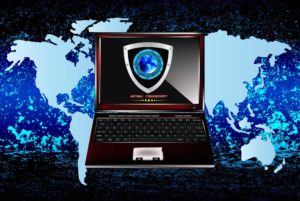Collaboration highlights the importance of addressing cybersecurity challenges of NSF science
 The security of the more than $7 billion in research funded by the National Science Foundation will be significantly bolstered thanks to a $5 million grant to Indiana University and partner institutions to create the NSF Cybersecurity Center of Excellence.
The security of the more than $7 billion in research funded by the National Science Foundation will be significantly bolstered thanks to a $5 million grant to Indiana University and partner institutions to create the NSF Cybersecurity Center of Excellence.
The funding will designate the IU-led Center for Trustworthy Scientific Cyberinfrastructure as a Cybersecurity Center of Excellence.
The center, a three-year-old collaboration between IU, the National Center for Supercomputing Applications, the Pittsburgh Supercomputing Center and the University of Wisconsin-Madison, works to address cybersecurity challenges of NSF science.
Ensuring scientific computing remains trustworthy and uncorrupted is essential in protecting the nation’s science. In its role as a Cybersecurity Center of Excellence, the CTSC will provide readily available cybersecurity services tailored to the NSF science community.
These resources will include leadership and coordination across organizations, and education and training to expand the pool of available cybersecurity expertise.
“NSF-funded cyberinfrastructure presents unique challenges for operational security personnel and impacts other important areas of research affecting society, including ocean sciences, natural hazards, engineering, biology and physics,” said Anita Nikolich, cybersecurity program director at the NSF’s advanced cyberinfrastructure division. “Organizations that host cyberinfrastructure must find the right balance of security, privacy and usability while maintaining an environment in which data are openly shared. Many research organizations lack expertise in technical and policy security and could benefit from an independent, shared security resource pool.”
The CTSC will collaborate directly with NSF-funded research organizations to address their cybersecurity challenges and provide forums for cybersecurity collaboration across organizations. For example, Jim Basney of the National Center for Supercomputing Applications will lead CTSC support activities on the topic of identity and access management for research organizations. The CTSC will also convene an annual NSF Cybersecurity Summit, led by James A. Marsteller, security officer at the Pittsburgh Supercomputing Center, to share experiences, provide training and discuss cybersecurity challenges.
“Cybersecurity is no longer solely a technical matter — it’s a critical part of any organization’s risk management,” said Von Welch, director of IU’s Center for Applied Cybersecurity Research. “Addressing the risks to computational science requires a comprehensive understanding of research and the threats it faces. Many of these threats are those faced by any other organization on the Internet, but others are unique to the science community with its collaborative nature and use of high-end information technology and cyberinfrastructure.”
An example of a safeguard the CTSC will promote is software assurance, with experienced, respected names in that field such as Barton Miller, a professor at the University of Wisconsin-Madison offering expertise to reduce the risks of vulnerabilities and breaches for researchers.
“Every day the news continues to document why truly excellent research in highly applied cybersecurity is a national priority,” said Brad Wheeler, IU vice president for information technology and interim dean of the IU School of Informatics and Computing. “This award adds to the many national distinctions that CACR has achieved in its 13 years as part of IU’s formidable cybersecurity capabilities in education, research and operations.”
Additionally, the CTSC will collaborate with the U.S. Department of Energy’s Energy Science Network, or ESnet, to develop a threat profile for open science.
“The Department of Energy and NSF enable scientific discovery in a range of domains critical to our nation’s future,” said Greg Bell, director for ESnet and division director at the Lawrence Berkeley National Laboratory. “Working together to understand cybersecurity threat models shared by these collaborations is an important step forward for the two agencies, and ESnet is delighted to be collaborating on this effort.”
Material from a press release was used in this report.
- Higher-ed CIOs struggle to create digital experiences - May 16, 2024
- Students turn to faculty for career readiness, advice - May 15, 2024
- CPL programs growing among adult students, learners of color - May 14, 2024

